Everything started with the impressive work of Dr. Robert B. Cialdini. He wrote a book called The Psychology of Persuasion. It is one of Amazon’s best-selling books. To this day his theories have heavily influenced the way we think about advertising and copywriting.
Applying his persuasive techniques to your website and advertisment copies will greatly improve the overall conversion rate of your funnel.
0. Unity – We are all social animals 🐒

People like people. We all identify ourselves with the groups we belong to.
For example, I am a tennis player, a cat owner, a UX Designer, a fitness guy, and a hobby chef. These are the groups I associate with.
You can utilize this persuasive technique in your ad copies and A/B Testing Projects.
For example, you can start your advertisment with:
- “You, as a digital market, know how important SEO is for your …”
- “You, as a caring dog owner, know the feeling of …”
- “Big football fans like you care about …”
By using this technique, people who read your ad will feel that they belong. Instantly you have their fullest attention.
From my point of view, you should use this persuasive technique carefully and ensure whatever comes next is really a concern of that particular group.
Recently, I helped redesign the above-the-fold element of the SaaS Company – storrito.com. The Unity Principle came in handy here for me. We simply called out the people who were most likely to use their service.
“The perfect tool for influencer, brands and agencies”.
Of course, we might miss a few, but as you know, the 80/20 rule is always right. 😜
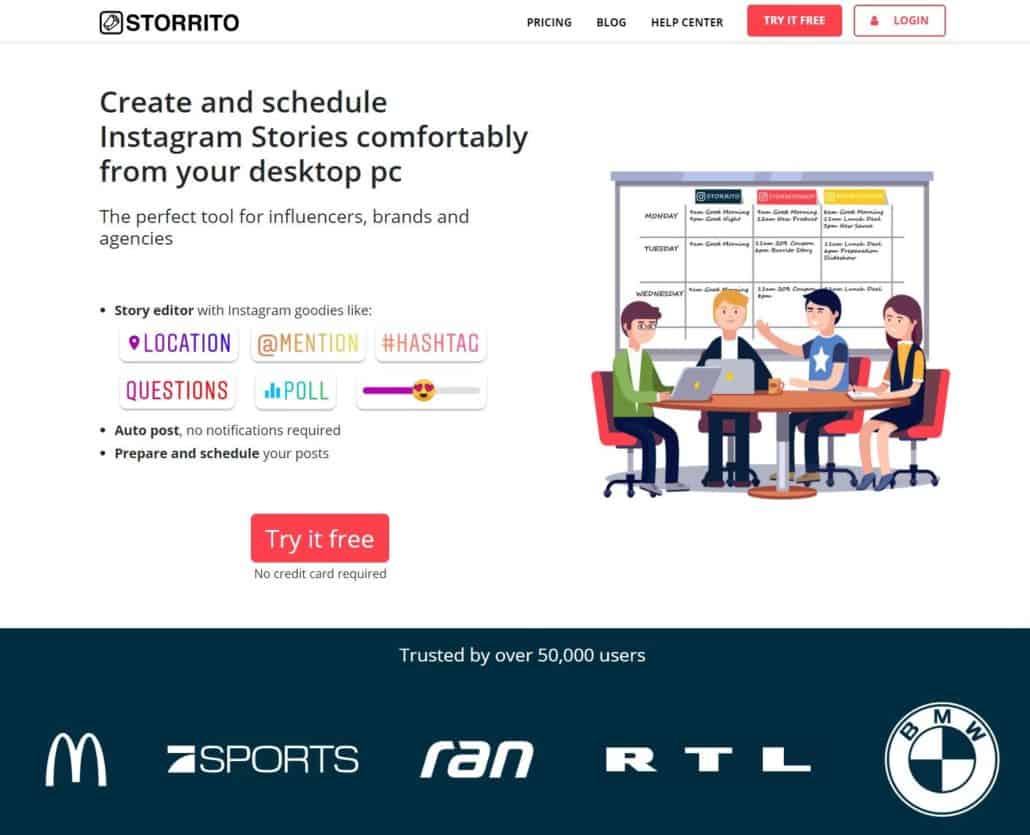
By the way, this is the 7th principle of Cialdini’s work. Some people refer to it as the “secret” principle, as he only recently added it to his list.
However, I thought I would start with the most interesting one.
1. Authority – People believe in Authority

People trust authority. For example, Dr. Robert Cialdini generally makes a better impression on us than just Robert Cialdini. We are used to the authoritative prefix ‘Dr’.
It impresses us as we have great respect for doctors.
Another example are Security-Seals. As an E-Commerce business, you can add those to your checkout. They build up authority and symbolize trust. Some common seals are Norton Security, MacAffee, or Trusted Shops in Germany.
ConversionXL did an interesting study about the trustworthiness of security seals.
They discovered that payment logos such as Visa and PayPal alone were already increasing trust for the user. Because after all, PayPal, Visa, and MasterCard are brands that represent authority and trust.

So, in case you run a small e-commerce business and you cannot afford all those fancy trust seals, simply highlight your payment logos! Bonus tip: keep them close to your ‘call to action’ button.
You can also highlight your SSL-Certificate, just by downloading various free logos.
2. Reciprocity – People like to return favours

The idea behind it is very simple: “I give you something for free and in return, you give me your email address.” This is one possible scenario, but there are a dozen others you can use.
The following is a good article about Lead Magnets – here you will find many examples of free Giveaways.
Now, back to a broader approach. The marketing world has changed over the years, in the past marketers were pro-actively selling you something. Today, smart businesses try to educate you and provide some value upfront before they even start pitching you their pricing page.
A recent study has found that 63% of SaaS Companies are offering a free trial to their users. This way, you build bonds with their service before even paying for it. Earlier, I found an interesting quote on Noah Kagan’s latest podcast:
As you can imagine, this sales strategy is the most welcoming of all. Consumers are becoming smarter every day; they can easily compare prices and find the best tools they possibly can. Therefore, providing upfront value and trust is a must.
However, in some cases, you may still need to approach your customer without any heads up. In this case, there is an awesome blog post about writing cold emails in a persuasive way.
3. Social Proof – People tend to do what other people do

“Other customers also bought” – this is a common example of how to use the persuasive technique of social proof.
People tend to follow the lead of others. This tactic holds great potential to increase your overall online revenue.
Some e-commerce companies go even further and display how many times a product was bought by others within certain regions.
Why does social proof work on us? The entire social media world is based on this very principle. People like to follow their peers and to see what they are doing.
A study of marketingcharts.com confirms that 84% of global online consumers trust recommendations from people they know.

Therefore, you should encourage social sharing throughout your customer’s journey. Do this by displaying social sharing buttons on your product pages, blog posts, or even on your “Thank You” page.

People always want to show their friends the things they have purchased. Since they are friends, it is likely that they will also like the product. Potentially, even buy it for themselves.
Another great way of adding social proof is through testimonials of your existing customers. By doing this, you can achieve good uplifts. However, do NOT include cheesy images from Shutterstock. Just invest some more time in this.
Hiring a well-known influencer in your niche to recommend your product also works well. You will almost certainly attract more trust and sales. Hotjar dedicated one whole page to video testimonials, which is even linked in their main header.
Optimizely took it even one step further and made cinema ready client testimonials, which are persuasive as hell: See Optimizely Testimonials
4. Commitment and Consistency – People tend to be consistent in their decisions, actions, and opinions
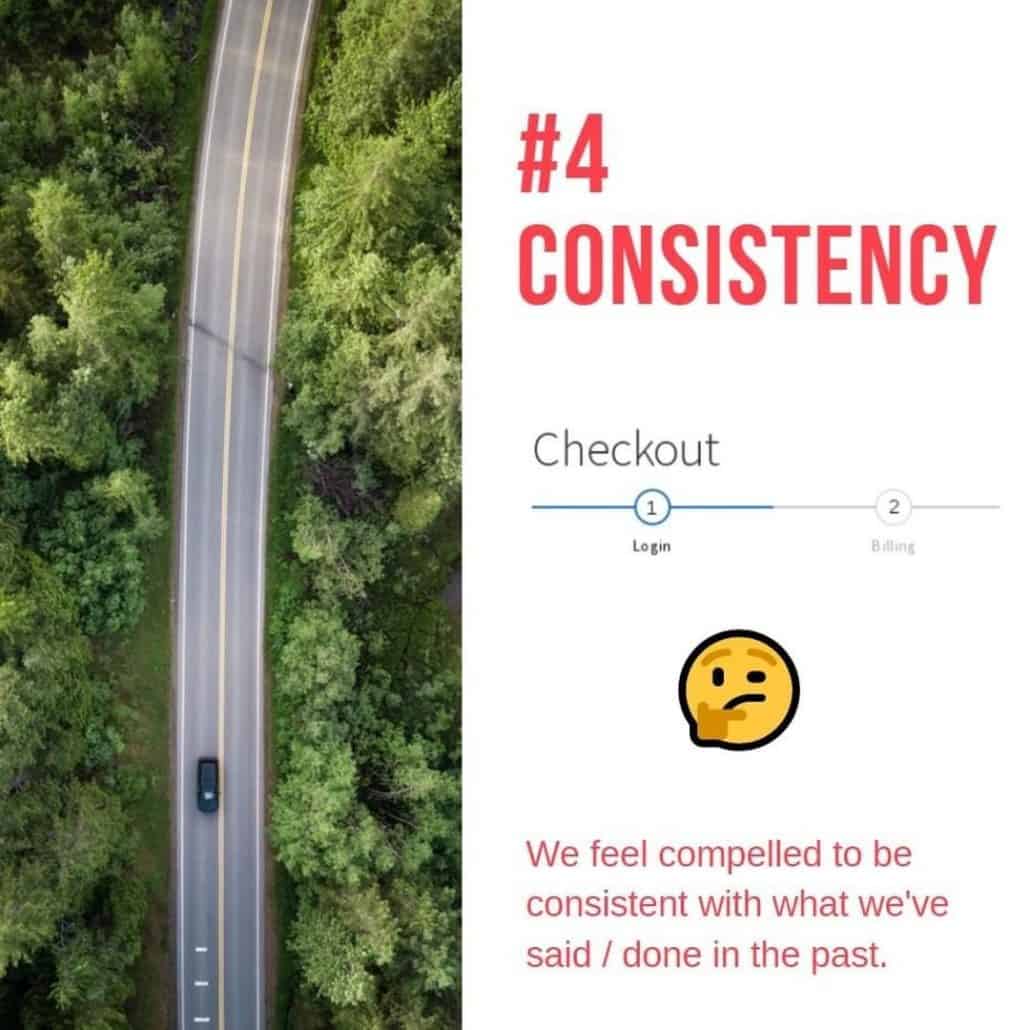 Once people have made a decision, they usually follow through. Sometimes even though they already recognized that they were wrong.
Once people have made a decision, they usually follow through. Sometimes even though they already recognized that they were wrong.
This persuasive technique is also behind the Free Trial Signup among subscription businesses. In the example below, Adobe tries to persuade you to sign up with a Free Trial period to get you hooked on their product.

Once you are hooked and found your way around the product, it is unlikely that you will change your mind.
Before you know it, Adobe has become your photo editing software. You have educated yourself with tutorials on how to use it. Your free trial expires and now it’s simply too inconvenient for you to change the software. That’s the trick!
People tend to stick with the tool they have once chosen to use. This is the magic behind loyal customers. That’s why most subscription businesses are so successful.
5. Liking – If people like you, they are more likely to say yes
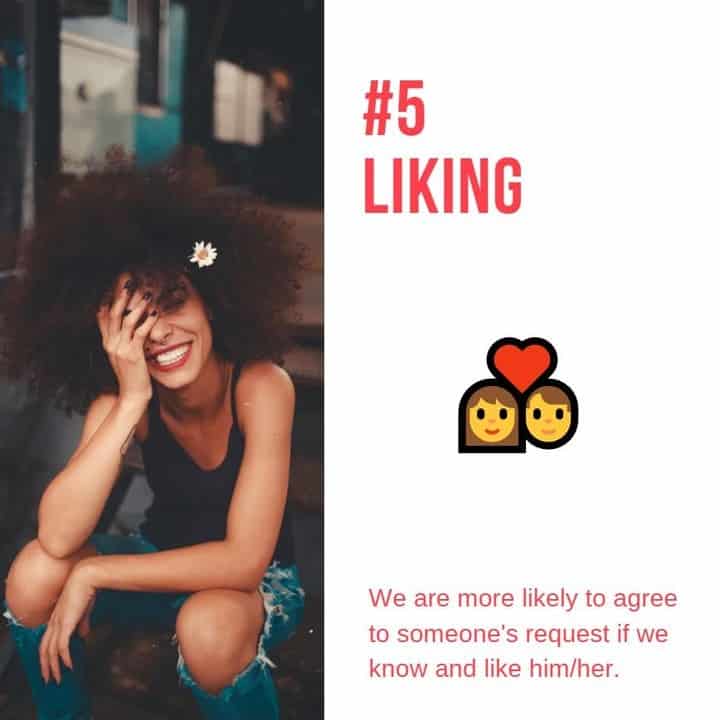 People like pretty people. It’s the oldest trick in the book. This is why we use models to represent our brands, as people are drawn to attractive people.
People like pretty people. It’s the oldest trick in the book. This is why we use models to represent our brands, as people are drawn to attractive people.
So having an attractive person promoting your product on your website will most certainly enhance the trust and engagement of your site.
 Recently, I had a good laugh after seeing Cristiano Ronaldo promoting KFC. We can only guess how many millions he received for holding up this bucket. But one thing is for sure, KFC would not have spent those millions if it didn’t work.
Recently, I had a good laugh after seeing Cristiano Ronaldo promoting KFC. We can only guess how many millions he received for holding up this bucket. But one thing is for sure, KFC would not have spent those millions if it didn’t work.
Nowadays, we call it influencer marketing. The advertisement budgets for Instagram Influencers skyrocketed within the last few years.
There are brands who almost purely focus on this channel to generate sales. Because this persuasion principle works so well.
6. Scarcity – People value things that seem to be rare
 Since the beginning of mankind, humans value rare things. Gold, diamonds, and limited editions!
Since the beginning of mankind, humans value rare things. Gold, diamonds, and limited editions!
This measure of value is still true in the digital age and helps to uplift your conversion rate.
Most popular e-commerce businesses, such as Amazon.com or Booking.com, use this persuasive technique in various forms:
- Showing how many items are left in stock – “Only 3 items are left in stock”
- Selling limited editions – “Get one of 100 individual pieces”
- Giving limited discounts – “It’s Black Friday, get 30% off in the next 24h”
- Show a countdown clock to add even more urgency
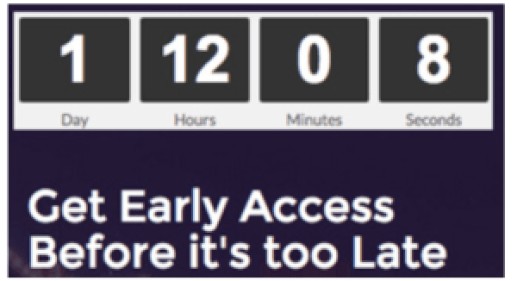
Bonus: Persuasive Writing Techniques
Of course, Dr. Robert Ciladini isn’t the only one studying human behaviour and finding proven techniques to influence it. Below, I want to share a list of my favourite persuasive writing techniques.
1. Create a dialogue (my favourite persuasive technique for writing)
I believe I first read it on Neil Patel’s blog. You know, the SEO guy. He recommended creating a dialogue in your blog post by talking to your reader directly.
When writing your copy, use words such as “I”, “me”, and “you”. By using the first-person perspective, you will create trust and familiarity with your audience.
Jaden Goldsmith, a UX copywriter at Booking.com, found an interesting way of using this technique. She used the pronouns “you” and”your” 12 times on their booking page. This suggests to the user that it is their own selection, their choice.
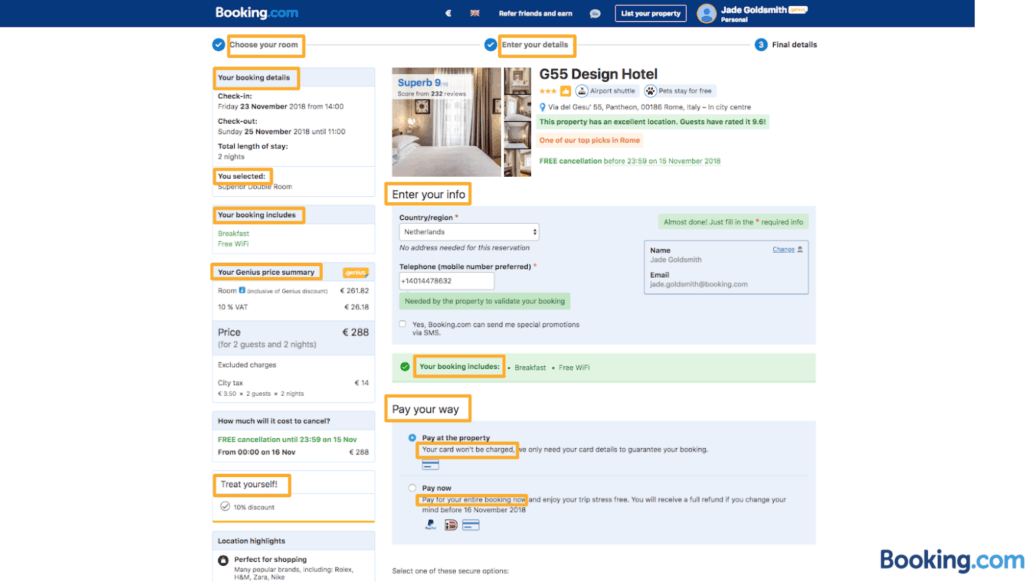
2. Appeal to Emotion and Senses
This technique depends a lot on the product you promote. Of course, writing about chocolate is easier than writing about a SaaS Business. Regardless, use colours, tastes, feelings, and memories to enhance the way your copy resonates with your audience.
3. Use Human Language
Be human. Use everyday language. This way you will have better connections with your audience. Write to them as if they were your friend.
One common trick is to use emojis, it’s a persuasive technique to appear friendly.
4. Explain Everything
If someone is willing to pay for your service then there shouldn’t be any open questions. I would suggest looking at the customer service chat history or implementing a survey tool.
For example, Hotjar can help you to find out the concerns of your customers. Afterwards, you can create a FAQ Page and incorporate the findings in your copies.
An interesting study of Adespresso revealed that even Facebook Ads with a long ad copy resulted in better click-through-rates. The fun fact was that the surveyed marketer promoted shorter copies; regardless, the result proved them wrong, have a look.
5. Increase your Readability Score
Writing shorter sentences is the first step. Studies have shown that the average reading skill of an American is surprisingly low. Moreover, everybody hates unnecessary long and complicated sentences. People will end reading your copy earlier and this is bad for ranking, conversion, and pretty much everything else.
(There is a WordPress plugin – Yoast SEO which calculates the readability score for you)
6. Call to action
Always tell your user what comes next and what he should do. Not only on your “call to action” buttons. Be persistent in your wording and guidance along your user journey. You need to tell them what to do:
- “Sign Up”
- “Get Quote”
- “Click here to check out”
7. Sell the outcome
Marketers tend to speak about themselves, their company, and the features of their products. They also highlight often enough how great all they are.
This is the worst thing you can possibly do. I always tell my clients “no one gets up in the morning and says to himself ‘Oh, today I want to buy a new Photoshop Edition’”.
Instead, people get up in the morning and say to themselves “Today I want to create something nice, a better version of yesterday”.
Now your job, as a marketer, is to enable them to fulfil their dreams. In this example keep your promise with the newest edition of photoshop.
I dedicated a new post to this topic – How to write a persuasive value proposition for your product, check it out.
❤️ Please like, share or comment below.
I hope you enjoyed this article and that it provides you with some value for your next Optimization Test. Feel free to reach out to me if you have any questions or suggestions.
Enjoy your day!
Become a better marketer through A/B Testing.
Get interesting stuff to your inbox - A/B Test Ideas, proven UX concepts and new tools.

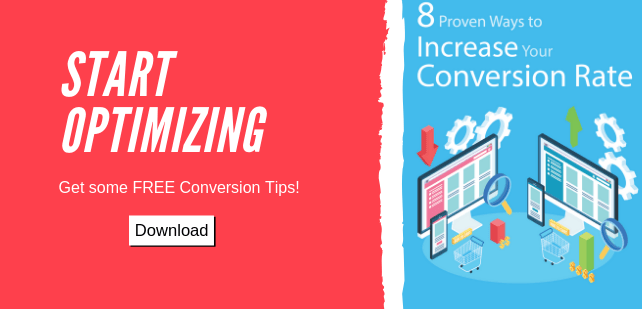



Leave a Reply